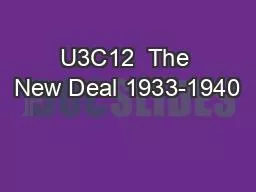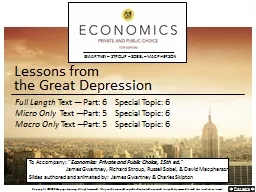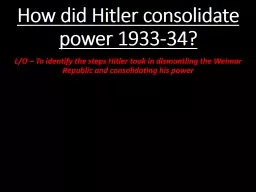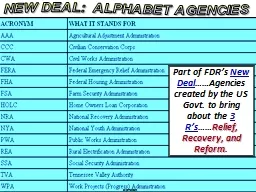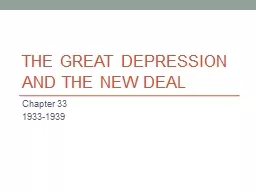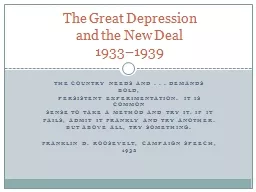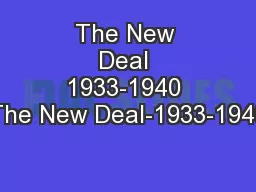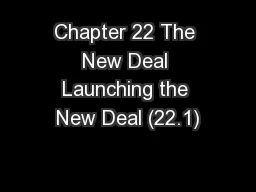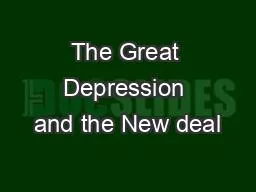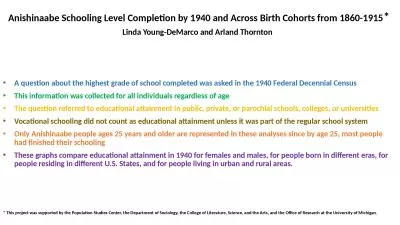PPT-U3C12 The New Deal 1933-1940
Author : nonhurmer | Published Date : 2020-07-01
US History Essential Question What was the New Deal and how did it change American society Main Idea The New Deal was President Franklin D Roosevelts plan for overcoming
Presentation Embed Code
Download Presentation
Download Presentation The PPT/PDF document "U3C12 The New Deal 1933-1940" is the property of its rightful owner. Permission is granted to download and print the materials on this website for personal, non-commercial use only, and to display it on your personal computer provided you do not modify the materials and that you retain all copyright notices contained in the materials. By downloading content from our website, you accept the terms of this agreement.
U3C12 The New Deal 1933-1940: Transcript
Download Rules Of Document
"U3C12 The New Deal 1933-1940"The content belongs to its owner. You may download and print it for personal use, without modification, and keep all copyright notices. By downloading, you agree to these terms.
Related Documents

